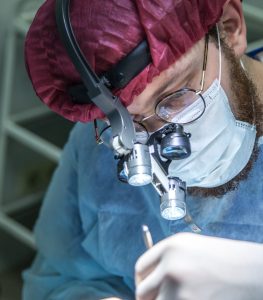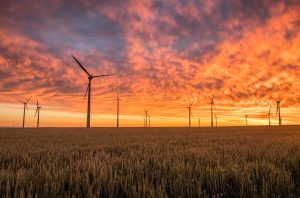With the Federal Election dominating the headlines and polling day just weeks away, this year’s Victorian Budget largely flew under the radar until its release yesterday.
But with 2022 looming as a double election year for Victoria, this budget presents a milestone opportunity for the Andrews Labor Government to reaffirm its agenda as it seeks to secure a third term of government on November 26.
Achieving that goal might be trickier than expected after two years of COVID-19, which has left Victoria’s economy and health system in urgent need of repair.
While repairing the economy necessitates savings, fixing the health system requires fresh funding.
Juggling these two competing demands is the central challenge of this budget, but so far, the Andrews Government firmly believes it can do both.
Led by Head of Government Relations Trystyn Bowe, the Banksia Strategic Partners team has pored over the budget papers to assess how the government is tackling these challenges, and what it means for the sectors in which we work.
Health
James Fitzpatrick, Senior Associate
The Andrews Government’s tag line for this year’s state budget is “Putting Patients First”, which is no surprise given the way COVID-19 impacted the health system.
Treasurer Tim Pallas has sold this budget as this government’s “Pandemic Repair Plan for more staff, better hospitals and first-class care”.
That repair plan consists of some big announcements, including:
- $12 billion to get elective surgery, nurses, paramedics and emergency call takers back on a level playing field;
- The training and hiring of up to 7000 new health care workers to ease current shortages;
- A brand new $1 billion hospital in Melton (with 24-hour emergency, intensive care, maternity and mental health services);
- $333 million to fund 400 new staff at Victoria’s pressured triple-zero services;
- $20 million of support for people with eating disorders;
- $698 million to expand the “Better at Home” program;
- $500 million for the Barwon Women’s and Children’s Hospital;
- $236 million to expand the emergency departments at Casey and Werribee Mercy Hospital; and
- $300 million to regional hospitals by way of small to medium grants to fund projects such as theatre renovations and equipment upgrades.
Opposition Leader Matthew Guy quickly attempted to flip the script, calling the budget “a repair plan for the Premier’s reputation”. He criticised record debt and the poor funding of hospital emergency departments before the pandemic.
Irrespective of your political persuasions, these fresh funding announcements should come as a welcome relief for the organisations and workers who have been on the frontlines battling COVID-19.
Mental health
 Trystyn Bowe, Head of Government Relations
Trystyn Bowe, Head of Government Relations
The Andrews Labor Government made mental health the jewel in its crown during the 2018 election campaign, and this year’s $1.3 billion investment continues the rollout of recommendations from the final report of the Royal Commission into Victoria’s Mental Health System, released in February 2021.
One such recommendation was to repeal the Mental Health Act 2014 and replace it with a Mental Health and Wellbeing Act, which will focus more on preventing mental ill health, and give consumers and carers greater choice and control over their care.
The Royal Commission recommendation states this should be passed no later than mid-2022, but with only four sitting weeks before the winter break, the government is unlikely to meet that deadline.
However, this year’s budget does provide $23.9 million to support the implementation of this new act when it does pass.
$372 million will also be invested to train 1,500 new mental health workers, including 400 mental health nurses, 100 new psychiatrists, and 300 new psychologists, an unsurprising but welcome move for a government that has consistently run on a jobs agenda.
Alcohol and other drugs
Trystyn Bowe, Head of Government Relations
The Andrews Government has focussed substantially on investing in residential rehabilitation, in a bid to bring Victoria’s bed numbers into line with other states. To that end, this budget commits $36 million for a 30-bed residential rehabilitation facility in Mildura, and $6.5 million for mental health and alcohol and other drugs emergency department hubs.
Although there has been a notable lack of progress on the CBD Medically Supervised Injecting Service, initially promised in 2020, this budget provides funding to continue outreach services in the CBD, including a team of AOD and peer support workers.
The existing MSIR in North Richmond has been given capital funding, as well as enhanced homelessness services to support clients accessing housing. This is welcome news that will help to break down stigma and improve outcomes for the local community.
The economic outlook
Jack Banister, Head of Content
 Amongst all the spending, Treasurer Tim Pallas was optimistic about Victoria’s fiscal outlook, despite uncertainty in Europe and the lingering threat of COVID-19.
Amongst all the spending, Treasurer Tim Pallas was optimistic about Victoria’s fiscal outlook, despite uncertainty in Europe and the lingering threat of COVID-19.
“The upswing in the Victorian economy has been nothing short of spectacular and the improvement in our budget position has been nothing short of spectacular,” he told reporters during the budget lock-up.
Although net debt will rise from $101.9 billion in June this year to $167.5 billion by June 2026, the Department of Treasury and Finance is predicting that, come 2025, the economy will be growing by 2.75 per cent per annum.
Coupled with population growth caused largely by international migration, the government is hoping the budget will return to surplus by 2025-26, at which point, it can begin to pay down the state’s debt.
A key part of doing that will be the establishment of a $10 billion Future Fund using the proceeds of partially privatising VicRoads. The investment returns from the fund will be quarantined and returned, enabling it to grow to that $10 billion figure in the medium-term.
Leaving aside the merits of these economic figures, Matthew Guy’s opposition will seize on the forecasts outlined yesterday to run a “debt and deficit” campaign in the lead up to election day in Victoria on 26 November.
Sport
Jack Banister, Head of Content
This budget contains $88 million to deliver new and improved community sports infrastructure and programs to boost participation at local levels, which will all be delivered in partnership with local councils and sporting organisations.
But undoubtedly the headline when it comes to sport is the spending for the 2026 Commonwealth Games in regional Victoria. $2.6 billion will be spent to prepare for the Games and will enable the establishment of four athlete hubs in Geelong, Bendigo, Ballarat, and Gippsland. That aside, the specifics of how this money will be spent are still to be announced.
One thing that is known is that after the games, athlete villages will become social and affordable housing.
Other regional cities and towns can register their interest in hosting activities during the games, but details remain unclear when it comes to competition venues, and whether any will be located outside of the four hubs.
All in all, it means there’s plenty of time and opportunity for interested cities and towns to mount a compelling case for involvement in these Games. Given the enormous economic opportunity presented by such a major event, doing just that appears to be a bit of a no-brainer.
Energy and renewable transition
Alexander Whittle, Associate
 Given that Victoria is committed to reducing emissions by 45-50% on 2005 levels by 2030, the state’s energy transition will be in sharp focus in the next 18 months.
Given that Victoria is committed to reducing emissions by 45-50% on 2005 levels by 2030, the state’s energy transition will be in sharp focus in the next 18 months.
But in this budget, the focus is primarily on the customer. The signature energy announcement is a $250 power-saving bonus for any Victorian who searches for a better power deal via the Victorian Energy Safe website after July 1, 2022.
Another notable item is the fact that the new Melton Hospital, which is being funded to the tune of more than $900 million, will be an all-electric facility.
There were also a host of other announcements, including:
- A $7 million Low-Carbon Manufacturing Grant Program to support Victorian manufacturers compete in the global renewable energy component market;
- $10 million for an Energy Resilience solutions and Community Microgrid Program for targeted locations that are exposed to power outages due to bushfires and extreme weather;
- $9.4 million to secure energy supply infrastructure affected by storm and flood events in 2021, though this funding will also be used to rebuild affected public roads;
- $120 million for the Victorian Industry Fund, which will prioritise renewable energy, along with health, defence, and agriculture; and
- $3.1 million in ongoing funding to decarbonise Melbourne – Sydney freight with hydrogen, co-delivered with New South Wales Government.
While the budget will enable several new projects, the release of Victoria’s Gas Strategy Roadmap in the next two months will paint a much clearer picture of what technologies the Andrews Government intends to rely on to cut emissions. Watch this space.
First Nations
Trystyn Bowe, Head of Government Relations
Australia’s first ever Treaty law was passed in Victoria in 2018, and work is ongoing to ensure this process is a genuine partnership between the Victorian Government and Traditional Owners.
This budget commits $151.4 million for obligations arising out of the treaty process, as well as $400 million for Aboriginal Victorians across a range of programs including health, education, and family services.
Justice
Trystyn Bowe, Head of Government Relations
The justice system has been under pressure since COVID-19 hit, and the government’s $300 million investment is mainly aimed at increasing capacity, supporting victims, and ensuring regional court services are sufficient.
Therapeutic court initiatives are being continued and expanded, including the Ballarat and Shepparton Drug Courts.
Governments across the country have been coming under pressure recently to raise the age of criminal responsibility. This budget provides $1.6 million that will go towards a new after-hours online Children’s Court to help children who have offended stay out of custody.
What does it mean for you?
With the government’s agenda for 2022 clearly set, and the state election campaign as good as underway, Banksia is on hand to help you take your strategic ideas to government, or to simply make sense of the complex political climate in a double election year.
Get in touch with our team of experts here, to find out more about how strategic communications can help you.


